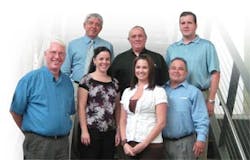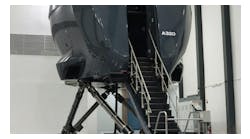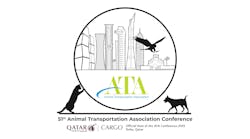NCATT is moving full speed ahead and the aerospace industry is its driving force. The support and participation of the industry has led to continued success of accomplishing the NCATT mission: To provide a forum through which subject matter experts from industry, government, and education develop technical knowledge and skill standards.
NCATT stands for the National Center for Aircraft Technician Training and was established through a grant from the National Science Foundation.
NCATT strives to be recognized as the premiere resource for the aerospace industry in the creation of knowledge and skill standards, certifications, and accreditations for training providers. NCATT has been working with industry since 1999 and the industry has witnessed its labor come to fruition when the first Aircraft Electronics Technician (AET) was certified in March 2006. Since then the number of certified AETs has grown to more than 350 technicians nationally. These technicians cover the scope of the aerospace industry to include civil and military manufacturers, commercial flight operations, corporate flight departments, repair stations, service centers, fixed base operators (FBO), and military and transport category operations.
AET certification
The NCATT AET certification is available nationally and in select foreign locations through our testing partner, PSI LaserGrade. The AET certification is the core certification requirement for the area of aircraft electronics/avionics. In order to obtain the specified endorsements in this field, the technician must first pass the AET. The first endorsement to become available for the AET is radio communications. This endorsement is in the final stages of development and will be available to the public in the fall of 2008. Three additional endorsements are also in the latter stages of development. These AET endorsements are onboard communications and safety systems, autonomous navigation systems, and dependent navigation systems. Next on the list for AET endorsements is the area of installation/integration. This area will be comprised of four endorsements: installation/integration planning, mechanical installation and removal, electrical installation, and installation/integration final checks and documentation. These endorsements represent just a few of the subjects to be covered in this field. NCATT will continue to enhance the AET certification with future endorsements in advanced digital, autopilot, bench, enhanced vision, flight management systems, in flight entertainment, instruments, power generation/distribution, surveillance, and weather and terrain awareness.
Addressing industry needs
NCATT also has the capability to respond to needs identified in other areas of the aerospace industry. These areas include maintenance, manufacturing, repair and overhaul, including advanced and specialized standards addressing airframe, powerplant, and safety. NCATT has taken the initial step of addressing areas outside of aircraft electronics/avionics at the request of manufacturers led by Lockheed Martin Space Systems.
This industry-led initiative addresses the need for standards, certifications, and educational programs to combat the $4 billion problem created by Foreign Object Damage (FOD). This request evolved into the industrywide standard in Foreign Object Elimination (FOE) — Elements of Basic Awareness. This standard was developed based on NAS 412, the primary guideline used by the Department of Defense to address the issues of FOD. By utilizing the NCATT process, the industry has adopted standards and created resources, and it is developing a certification that will be available in fall 2008.
A facilitator
It is important to understand that NCATT does not identify or define the standards that are produced. NCATT is a facilitator in the process and a tool to transform the industry identified knowledge and skills required into a usable and quantifiable standard. The NCATT process for developing standards is based on the educational process known as DACUM (Developing A CurriculUM). NCATT has modified the DACUM process to fit the unique needs identified by our industry. The NCATT process includes five parts: 1) Facilitation of an occupational analysis workshop, 2) Development/validation/adoption of standards, 3) Development/validation/adoption of the certification structure, 4) Development/validation/adoption of resources to support standards and certification in the forms of an instructional guide and study guide, and 5) Development/validation/adoption/dissemination of the certification exam. This process is dependent, once again, on participation by subject matter experts. These experts are not only knowledgeable in a singular task, but also in the overall processes and procedures required of a qualified technician.
NCATT utilizes this process of development and validation to ensure that the standards, certifications, and resources provide an accurate representation of what the industry has identified. The process of checks and balances benefits both the industry and NCATT and only works when there is a true partnership. This endeavor is not one that NCATT could have undertaken without the input and guidance provided by the vast technical knowledge represented by the participating subject matter experts. In order for the standards to maintain their integrity as a tool for the industry, the trust and respect for the process and NCATT as an organization is crucial. NCATT takes this trust and respect seriously and realizes that without it the work done will not hold value to the employers, the technicians, or the educational institutions it is meant to serve.
Who’s Who Tarrant County College (TCC) maintains oversight of all NCATT activities under the direction of Floyd Curtis, PI, and Rick Hestilow, Director. Lee Brewster, Programs Coordinator and Jamie Smith, Curriculum Developer, make up the NCATT team at TCC. Co-PIs include Dr. Richard Bowers of Weatherford College, Sam Huang of San Jose State University, Tom Inman of Pennsylvania College of Technology, and Tom Yanus of Embry-Riddle Aeronautical University. A list of partner companies, schools, and associations can be found on the website, www.ncatt.org. |
Enhance industry recognition
It is also important to acknowledge that the standards and certifications developed by the industry and NCATT are not meant to replace the current Federal Aviation Administration (FAA) mechanics’ ratings for Airframe and Powerplant. The NCATT standards are used to either enhance the A&P technician or allow for recognition as an industry-certified technician in a specialized and identified career field. As the industry begins to utilize NCATT standards and the certifications, a system similar to the Automotive Service Excellence (ASE) used in the automotive industry will be established. The aerospace industry will have its regulatory requirements and it will have a vehicle in which to set its own standards for knowledge and skill requirements for its workforce. This system allows for an identifiable method for technicians entering the workforce to define a career path through certifications as well as to decide on educational institutions that meet FAA requirements and the industry-identified standards.
The NCATT organization is a tool, a vehicle, and voice for the aerospace industry in the area of knowledge and skills standards. NCATT bridges the gap between education and industry and allows for open communication among the many unique and important areas the industry serves. NCATT continues to work with all of its industry partners in this evolutionary endeavor. NCATT would like to thank the industry for the participation and support that will continue to drive its success.



